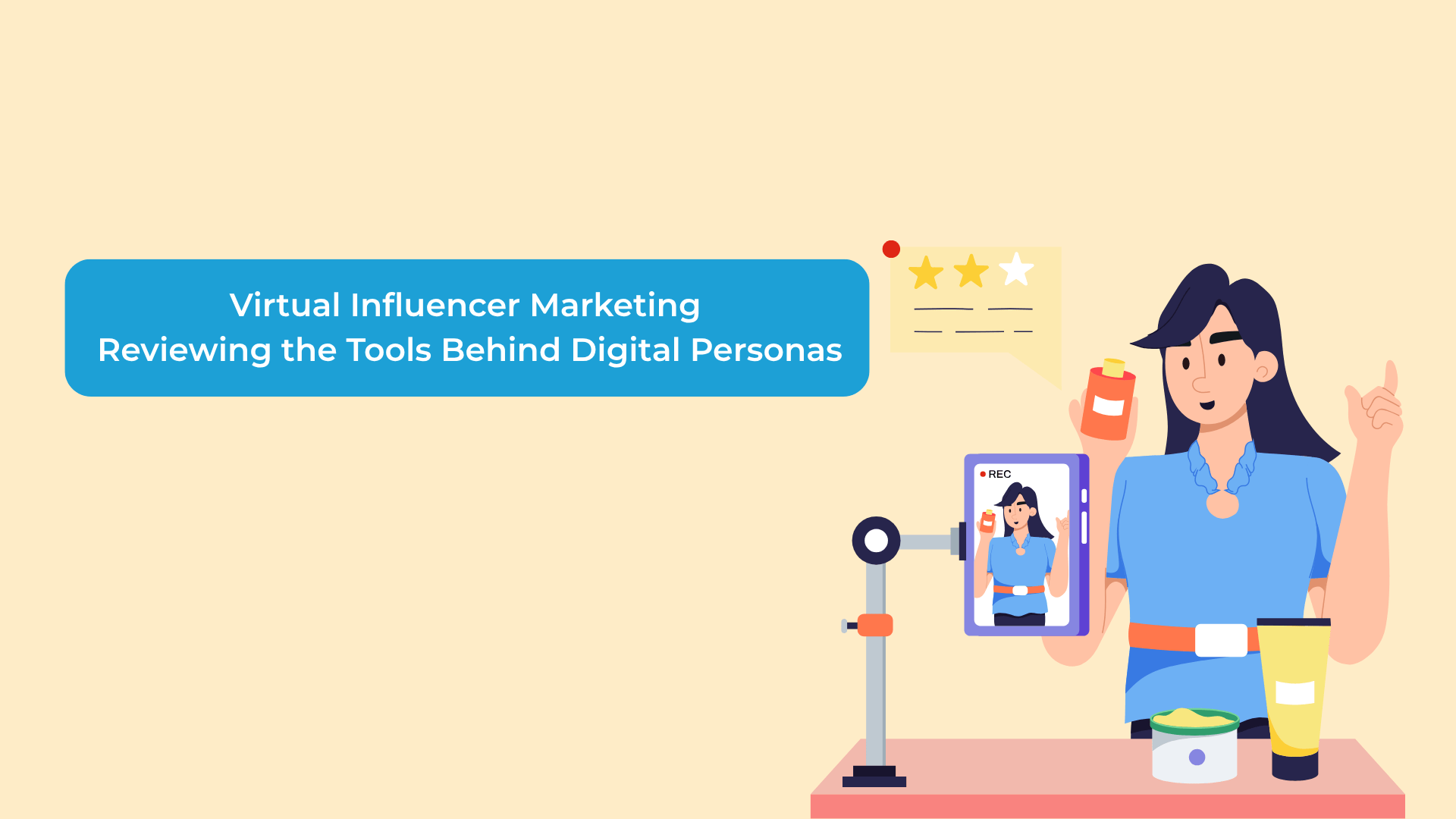Meet Lil Miquela, Shudu, Imma, and Noonoouri, Instagram influencers with massive followings, brand deals, and a catch: they’re not real. Virtual influencers are now a permanent fixture in digital marketing, blurring the line between AI, branding, and storytelling.
But what goes into creating and managing these digital personas? And more importantly, how are businesses using them to shape the future of marketing?
Let’s dive into the platforms behind these pixel-perfect influencers and evaluate their impact on modern campaigns.
What Are Virtual Influencers?
Virtual influencers are computer-generated characters that interact online just like human influencers. They post lifestyle content, model fashion, promote products, and even get into digital “drama” to stay in the limelight.
While they might not have a heartbeat, they’re raking in real brand deals with names like Prada, Samsung, and BMW jumping into the mix.
Why Are Brands Investing in Virtual Influencers?
- Complete Creative Control: No scandals, no schedule conflicts.
- Scalability: AI influencers can appear in multiple campaigns simultaneously.
- Novelty Factor: Audiences are intrigued, which drives engagement.
- Global Reach: They can speak any language, live anywhere, and embody diverse identities.
Top Tools & Platforms Powering Virtual Influencers
1. MetaHuman by Unreal Engine
Used for hyper-realistic digital humans, MetaHuman Creator allows developers to build avatars with stunning detail. Brands use this to craft lifelike influencers with customizable features and gestures.
- Best for: Ultra-realistic, high-end brand personas.
- Strength: Deep integration with game engines and 3D workflows.
2. Daz 3D
Popular for modeling and animating stylized digital characters, Daz 3D provides assets, rigging, and animation tools in one ecosystem.
- Best for: Fashion-forward influencers like Shudu.
- Strength: Extensive customization and compatibility with rendering tools.
3. ZMO.AI
A newer tool focused on AI fashion models and social media content creation. It allows brands to generate influencer-like visuals on demand.
- Best for: Fast, scalable content production.
- Strength: AI-generated outfits, scenes, and poses with minimal effort.
4. Synthesia
Though widely used for video avatars in corporate settings, Synthesia is now exploring influencer-like personas for branded messages and tutorials.
- Best for: AI video spokespeople.
- Strength: Multi-language, script-based avatars for product explainers.
5. Instagram + Blender + Adobe Suite (DIY Stack)
Some agencies custom-build virtual influencers using open-source 3D tools like Blender, layered with Adobe Photoshop and After Effects for compositing.
- Best for: Fully customized influencer personas.
- Strength: Total control with no platform lock-in.
Marketing Impact: Is It Worth It?
Engagement: Virtual influencers often boast engagement rates 2–3 times higher than human influencers. People are drawn to their mysterious aura.
Trust Factor: Surprisingly, transparency works. Followers know they’re not real and appreciate the storytelling surrounding them.
Campaign Flexibility: A single virtual persona can promote fitness gear on Monday and luxury watches on Friday without logistical hassle.
Ethical Considerations
- Disclosure: Brands must clearly label virtual influencers to avoid deception.
- Representation: There’s a fine line between inspiration and appropriation diversity, and diversity should be handled responsibly.
- Privacy: Unlike human influencers, virtual ones don’t face privacy invasion, but their interactions with audiences still raise data ethics concerns.
Future Outlook
Expect to see:
- AI influencers hosting Twitch streams.
- Virtual brand mascots starring in TikTok skits.
- 3D influencer-to-influencer collaborations.
- NFT tie-ins and digital fashion collections powered by blockchain.
As tech evolves, virtual influencer marketing will only get more immersive and interactive, possibly merging with AR/VR to create the next wave of brand engagement.
Final Thoughts
In the era of synthetic media, virtual influencers represent more than just a novelty. They’re strategic marketing assets. For brands looking to stand out in a noisy digital world, embracing digital personas could be the next big move.
Whether you’re a startup experimenting with new-age marketing or a tech giant exploring AI branding, understanding the tools behind virtual influencers is no longer optional. It’s essential.

